When I think of the Rose Bowl, I see the imposing San Gabriel Mountains overlooking the majestic arena like an all-empowering God of sports. I swear I can almost feel the searing Californian heat as it rises from the lush green grass. Brazil caress the ball seductively, passing it rhythmically as they try to hypnotise the blue wall of Italian defenders into submission.
I focus on Roberto Baggio as he receives the ball, and watch him glide effortlessly past the Selecao as if they were nothing. Disregarding their entire existence with his glorious and divine ponytail swaying under the majestic blue sky.
The Brazilian fans in the crowd dance to the sound of the samba drums, beating them deliriously as Bebeto and Romario serve up a carnival on the field of play. The atmosphere is palpable. Once more I see Roberto Baggio: His head in his hands, he falls to the ground. Defeated, dejected, demoralised.
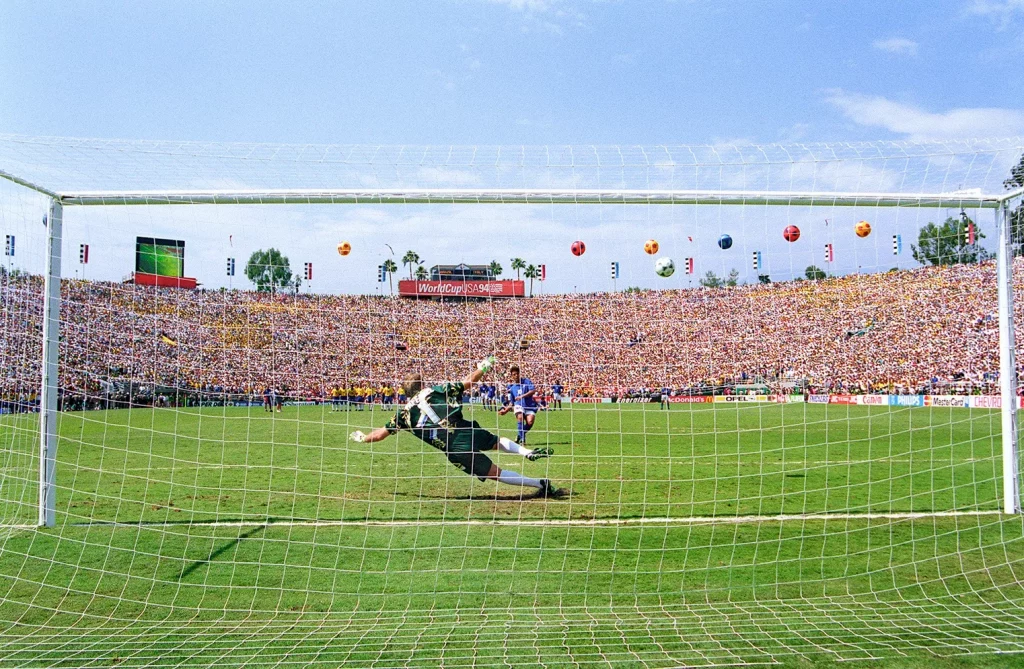
A NATIONAL HISTORIC LANDMARK
The 1994 FIFA World Cup heralded a new era for Football in the United States. The watching eyes of the world looked on as the most iconic sporting event in the world came to America. Throughout the competition, the Rose Bowl would play a starring role, hosting 8 games including the World Cup Final, an event watched by 92,000 spectators and over 700 million people worldwide.
This year marks the 100th anniversary of the Rose Bowl, having first opened to the public in 1922. It is a stadium recognised, not only as a California Historic Civil Engineering Landmark but also a National Historic Landmark. And, whilst it’s not America’s oldest venue, it is certainly the most iconic. In its time, it is a place that has made countless memories for millions.
The world-famous Rose Bowl Stadium in Pasadena has hosted two FIFA World Cup Finals, five Super Bowls, two Summer Olympic gold medal matches, superstar concerts, and of course the annual Rose Bowl Game for which it is renowned. It has also been the home stadium of the UCLA Bruins since 1982 and, Sports Illustrated named it the number-one venue in college sports and one of the Top 20 Venues of the 20th Century. Quite simply, it is a venue with a hell of a CV.
The Atlantic Dispatch caught up with award-winning graphic designer, art director, writer, and photographer, James Campbell Taylor to reminisce fondly about the Rose Bowl and to discuss modern aspects of stadiums across the globe.
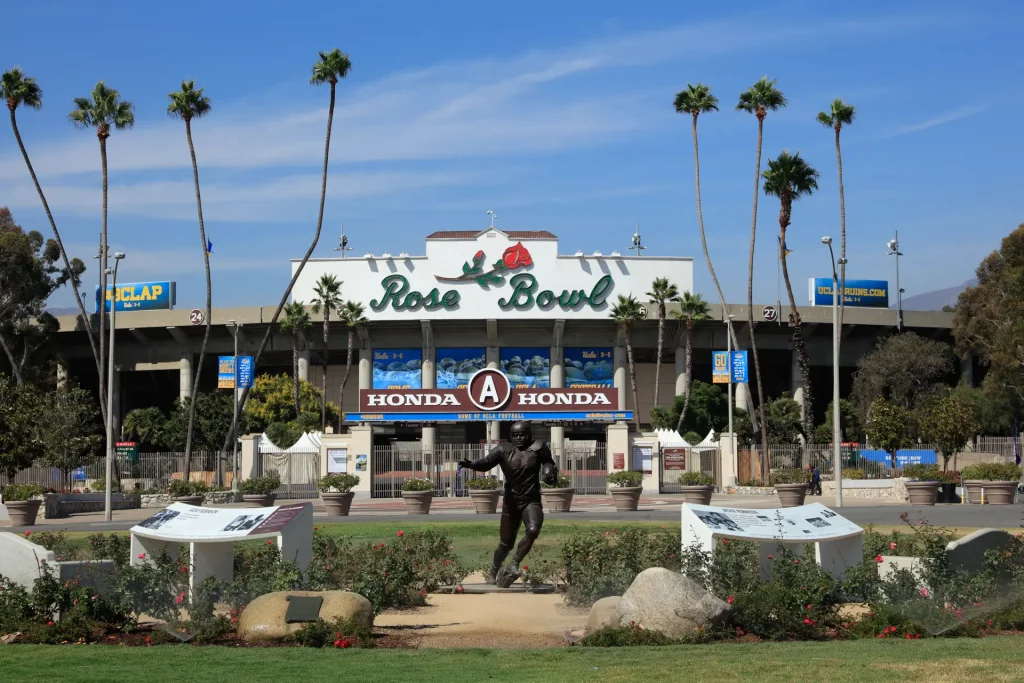
Taylor is somewhat of a footballing connoisseur, and unapologetic nostalgist, with a deep love for the culture of the beautiful game. Born in the UK he grew up supporting Leicester before moving to the Università degli Studi di Pavia in northern Italy. He spent most of his twenties living in Florence, where he developed an affection for Fiorentina whilst working as a writer, translator, English teacher, art history lecturer, and tour guide. It was in 1994 when he was first introduced to the Rose Bowl and this year he decided to embark on a spiritual pilgrimage from his home in New York to visit the historical and iconic arena as it turned 100.
When you think of the Rose Bowl what memory first comes to mind?
My first memory is staying up until the wee hours to watch Colombia-Romania. It was the first match of the tournament on the west coast and didn’t kick off until after midnight in the UK. 1994 was only the second World Cup I followed religiously, and I remember thinking what a very different spectacle it was, visually and atmospherically, compared to Italia 90. For a fifteen-year-old who’d never left Europe the novelty of that was extremely exciting.
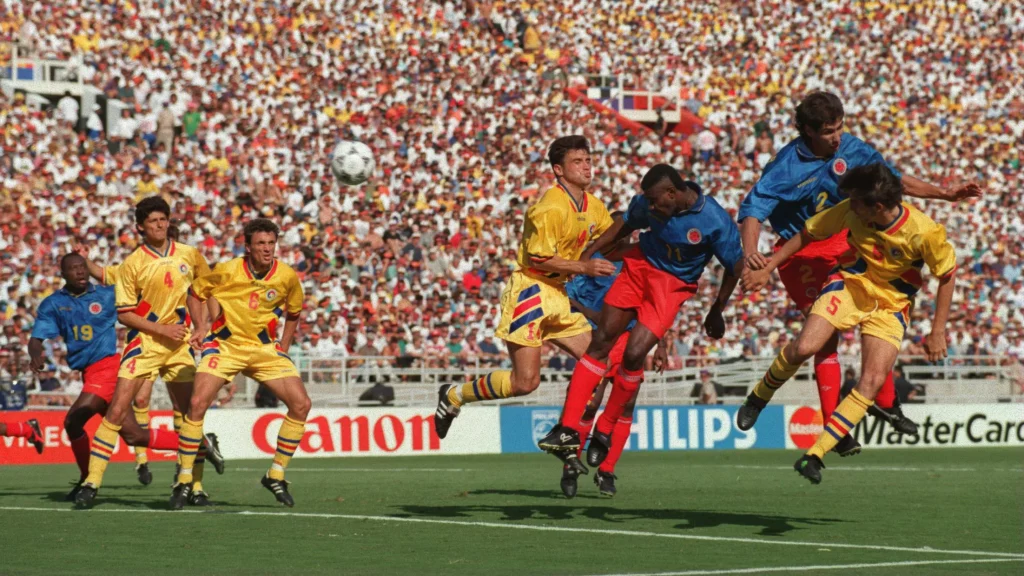
What makes the Rose Bowl such an iconic venue?
I think that depends on who you ask! As someone whose interest in college football is close to zero, the Rose Bowl is iconic for me purely due to its use as a venue for the 1994 World Cup. It also hosted the 1999 Women’s FIFA World Cup final, which was probably a bigger deal for people in the U.S. But having recently visited the stadium (on the day of its 100th anniversary, no less) I can also appreciate its historical significance for both American sports and the town of Pasadena.
What impact did this stadium have on the 94 World Cup?
I’m not sure what impact it had on the tournament, though it hosted eight matches some of which were highly memorable. In particular, I think of the United States’ victory over Colombia (aided by Andres Escobar’s fatal own goal), and Argentina’s 3-2 defeat to Romania in the second round, still one of the best matches I’ve ever seen. Then there was the final, which I watched outside a bar in a small town in northern Tuscany. They’d rigged up a TV screen and positioned rows of foldable chairs in a little parking area so the whole town could watch together. Needless to say, the conclusion of the match made it a somewhat traumatic evening, but also an unforgettable one.
THE GRANDDADDY OF THEM ALL
The Rose Bowl, as you may or may not know is of course more famous for American Football. The stadium plays host to the Rose Bowl Game, which is an annual American college football game, usually played on January 1st.
The Rose Bowl Game is nicknamed “The Granddaddy of Them All” because it is the oldest operating bowl game, having first been played in 1902 as the Tournament East–West football game. It is a contest that has been played annually since 1916 and since 1945, it has been the highest-attended college football bowl game.
The stadium was designed by architect Myron Hunt, who also designed the Ambassador Hotel and Henry Huntington’s house, which later became the main gallery of the Huntington Library. Originally built as a horseshoe, the stadium became a bowl when the southern stands were completed in 1928 and has been expanded several times over the years. At a modern capacity of 92,542, the Rose Bowl Stadium is the 15th-largest stadium in the world, the 11th-largest stadium in the United States, and the 10th-largest NCAA stadium.
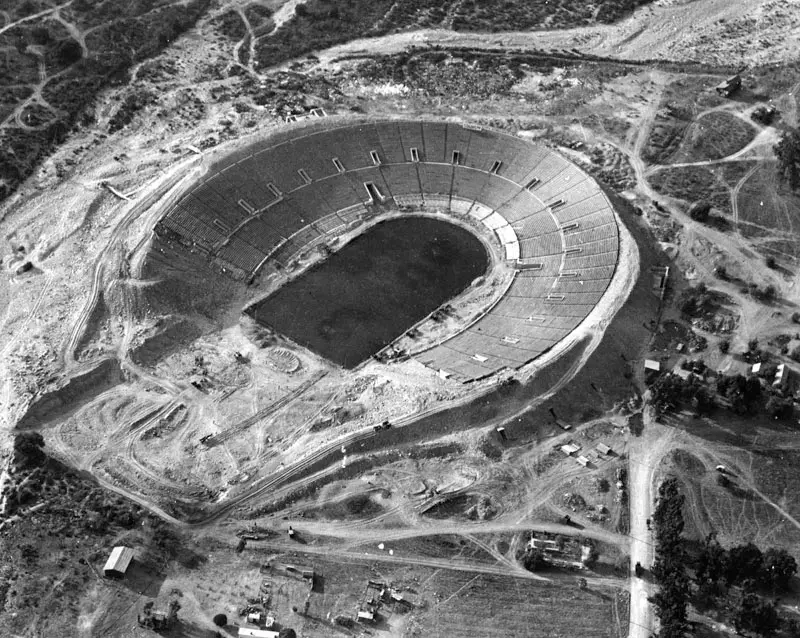
It could be said that venues like the Rose Bowl are a dying breed. Whilst new stadiums are of course glamorous, and aesthetically pleasing, they lack the character and charm of stadiums from years gone by. It would not be unfair to suggest that they resemble meeting somebody of great beauty and finding out they have nothing particularly interesting to say. Whilst the Rose Bowl still stands proudly after 100 years, we have to ask what will become of modern stadia years from now. Will they be remembered like the Rose Bowl or San Siro? Or will they simply fade into oblivion?
Where does the Rose Bowl stand in relation to other iconic stadiums in the world today?
The Rose Bowl was built a hundred years ago, and aside from a handful of cosmetic updates has barely changed since it opened. Design-wise it probably bears the closest resemblance to the mid-century concrete bowls of Eastern or Southern Europe. So it’s not the most state-of-the-art venue by today’s standards: for example, the seats behind the goals (or end zones) are still long wooden benches. But that’s part of its charm. The other eight stadia used for USA ’94 have either been heavily modified or demolished entirely, so I guess we should just be thankful that the Rose Bowl is still here at all.
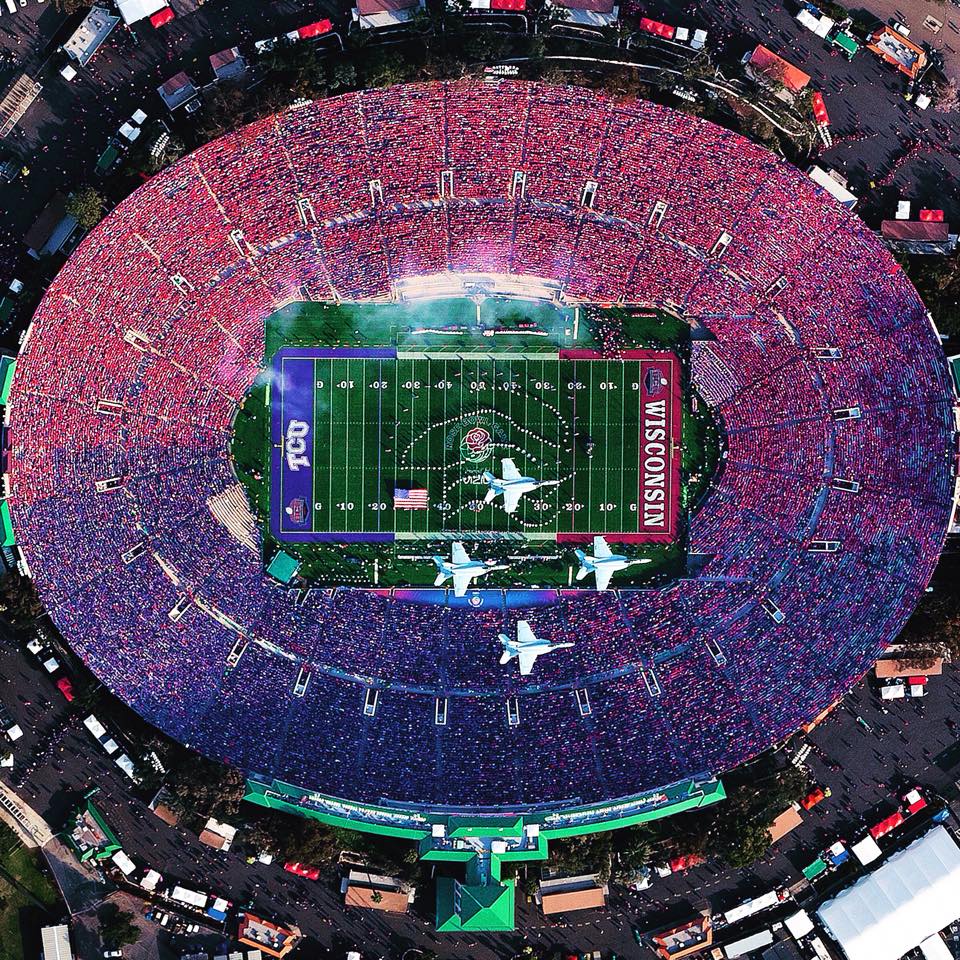
What are your thoughts on modern stadia? Do they have the same appeal as say the Rose Bowl?
Though they’re often good places to watch football, most modern stadia aren’t very appealing to me because they don’t have any history. I understand that it’s often more cost-effective to build a brand new ground than trying to update an old one, and I understand the need to make Stadia accessible and safe for everyone. But they can also feel like soulless corporate arenas. I don’t need a football ground to be a shopping mall as well. I’m not going to eat dinner there. I just want to experience the game and leave. Some people complain that older stadia aren’t comfortable, but if I wanted comfort I’d stay at home and watch on television.
My other issue with new stadia is that they’re so homogenised. These days it makes no difference if you’re watching a match from London or Lisbon or Leipzig — everything looks and feels the same.
James Campbell Taylor
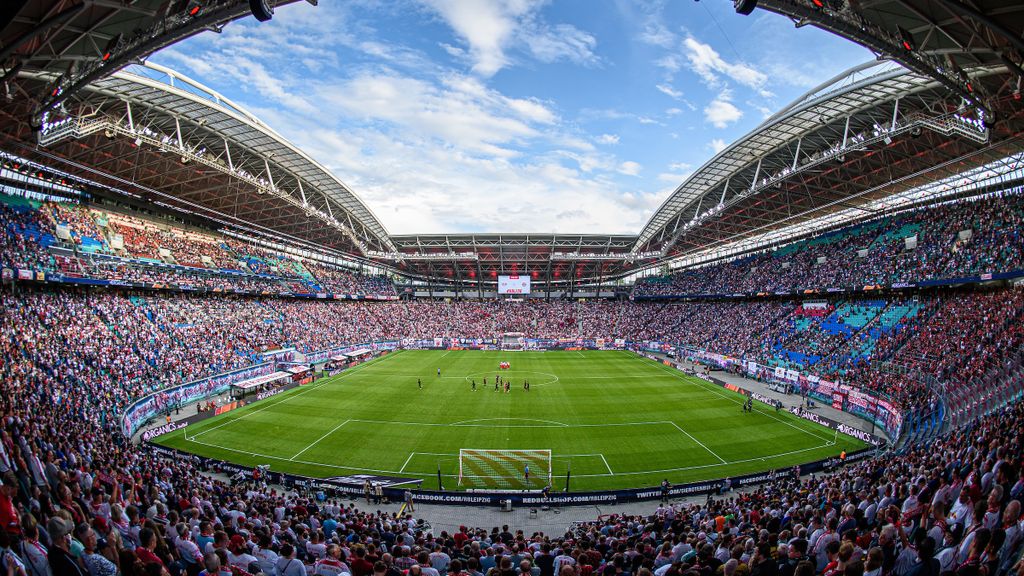
What are your thoughts on venues such as San Siro being replaced by these modern stadiums?
The thought depresses me tremendously, though knowing Italy’s impenetrable bureaucratic system I’ll believe it when I see it. It’s happened elsewhere so many times it shouldn’t come as a shock, but it feels especially unfortunate considering San Siro’s unique history and standing within broader Italian culture.
This is a stadium that’s been used at least once a week for almost a century. I spent a year studying near Milan so I used to go all the time. I was sad when they knocked down the old Wembley, but that was an outdated venue that was only used for cup finals and England internationals. The 1990 World Cup was over thirty years ago now, but it’s still the benchmark against which I judge all stadia. The first time I went to a game there I spent as much time surveying the architecture and observing the fans as I did following the match itself.
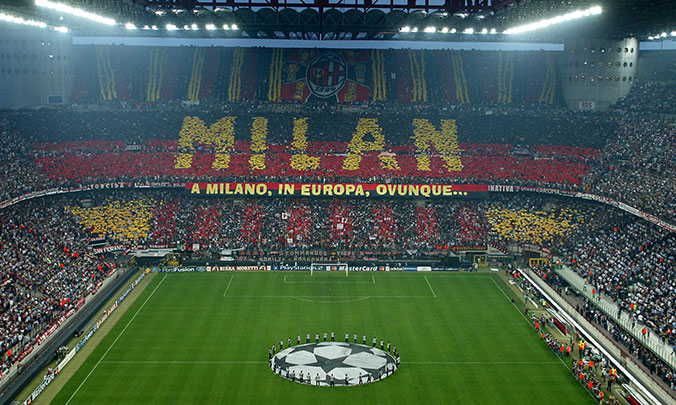
I still consider San Siro to be the pinnacle of football stadium design. It’s also the best atmosphere I’ve ever experienced.
James Campbell Taylor
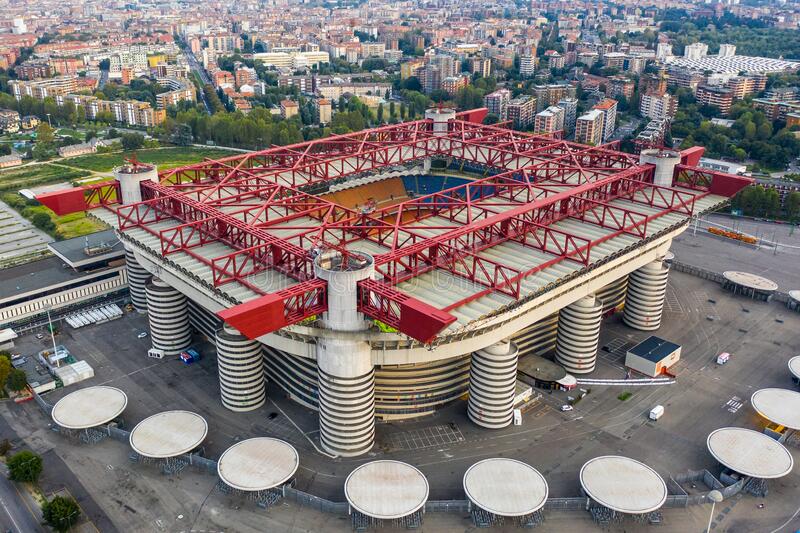
What are the 5 best stadiums you’ve ever been to and why?
As I mentioned before, comfort, shopping and food are not priorities for me, so I suppose I would judge a stadium on three main criteria: design, history, and atmosphere. San Siro is my number one for all three. The old Wembley was also incredibly loud and obviously, an essential place to visit for any football fan. A few years ago I saw a Mexican league match at the Azteca: another vast stadium that has huge significance for anyone as obsessed with World Cup history as me.
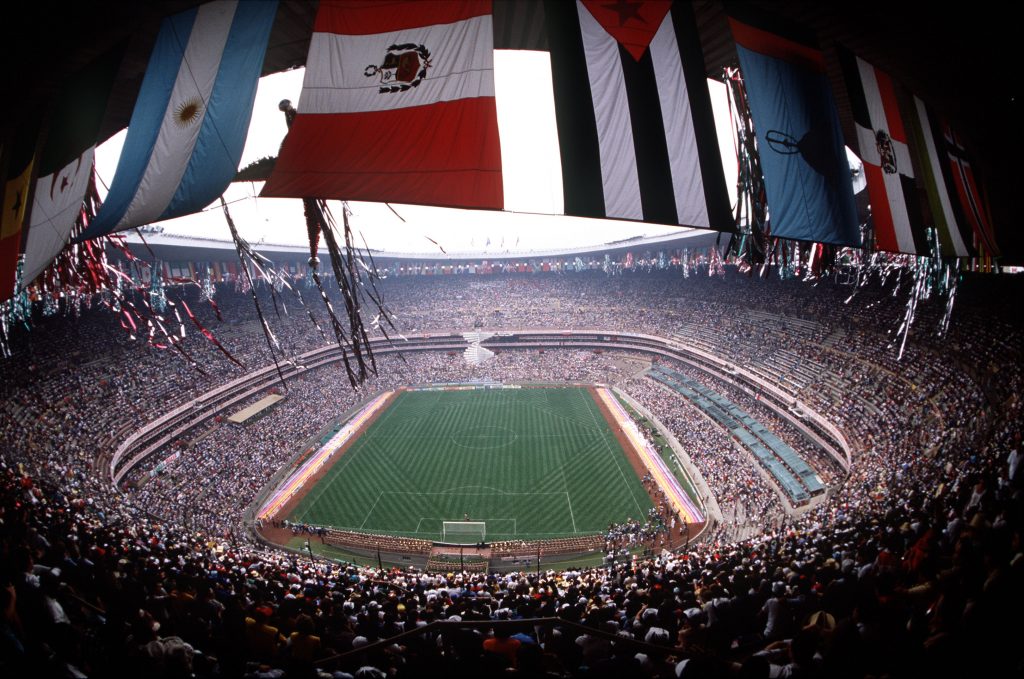
I’ve also been to games at the Bernabéu in Madrid and Camp Nou in Barcelona. Both were important and impressive places but neither atmosphere matched those I’d experienced in Italy. Then there are other stadia — such as the Rose Bowl or the Monumental in Buenos Aires — that I’ve visited without going to a game, which is sometimes preferable. I enjoy these pilgrimages because they afford you quiet time and space to absorb your surroundings. It can be an almost spiritual experience.
Do any remain on the bucket list?
I would love to visit the Maracanã in Rio de Janeiro, though I regret not having gone before they altered it for the 2014 World Cup. I’d also like to visit the Olimpiastadion in Munich, even though it’s no longer used for regular top-level football, which is a shame considering it’s only fifty years old.
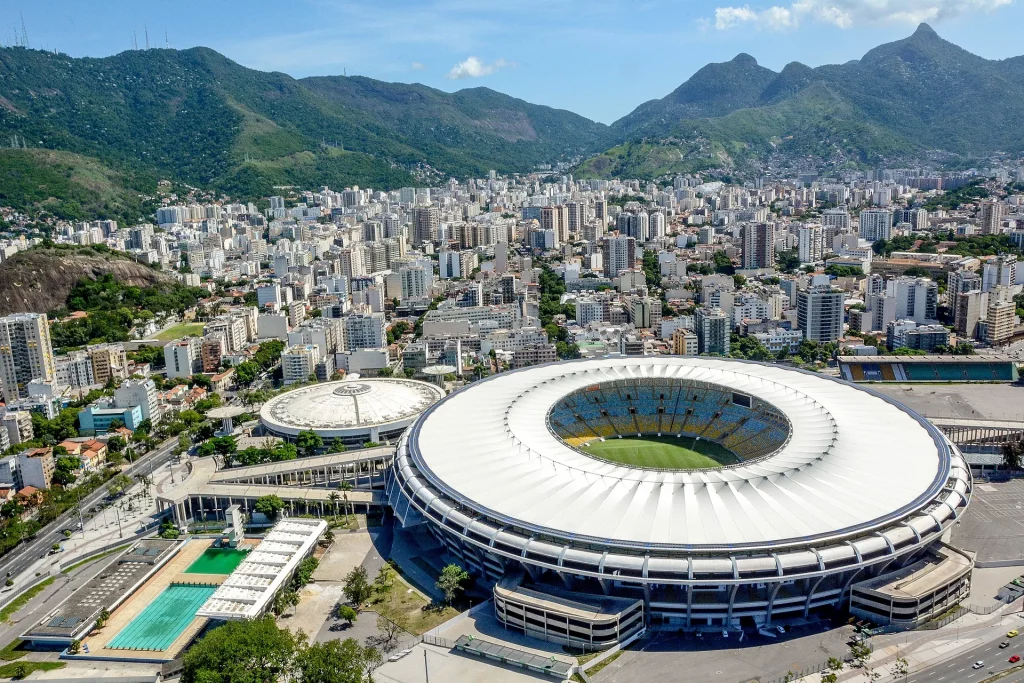
THE END OF AN ERA
As we have come to realise, the thoughts and feelings of fans rarely count for much in the money-hungry world of sports. We are possibly approaching the end of days when it comes to historical venues being used as sporting arenas. Soon they will all be replaced by state-of-the-art Lego replicas. Sure, you’ll be able to order a three-course meal, and a glass of chardonnay as you recline and unwind, watching a piece of sporting theatre unfold before your eyes. But it’s not the same and quite possibly it never will be. Until then, here is to 100 years of the Rose Bowl and to all those other stadiums that have given us memories that money could never buy.
—
Thank you very much to the gentleman that is James Campbell Taylor for his time.
